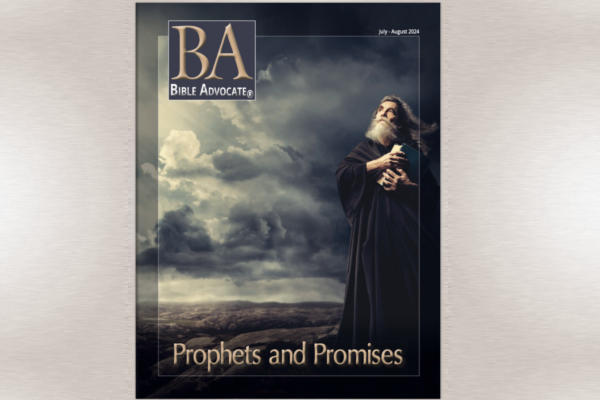Genre refers to a category, or type, of something. Regarding the books of the Bible, it refers to their literary type. For instance, Judges is a historical book, Song of Songs a poetic one. Matthew, Mark, Luke, and John make up a unique genre called Gospel, while Paul’s and Peter’s writings are called epistles, or letters.
But what kind of book is Revelation? Richard Bauckham notes, “It is important to begin by asking this question, because our answer determines our expectations of the book, the kind of meaning we expect to find in it.”[1] His point is a vital one. Those who open Revelation expecting to find a code book with a timeline of future events have expectations that vary drastically from someone who opens it expecting to find a theological-political critique of the Roman Empire. But which approach is correct? Thankfully, the book of Revelation itself tells us what type of literature it is.
Revealing Revelation
The book of Revelation is just that — a revelation (1:1). Translated from the Greek apokalypsis, the word means “unveiling,” or “revealing.” Next, it is a prophecy (v. 3) that God gave to Jesus to give to John, through an angel, so John could proclaim it to his brothers. Finally, it is a circular letter (vv. 4-6) written to seven churches situated along a postal route in modern-day Turkey. Thus, Revelation self-identifies as an apocalypse, a prophecy, and a letter.[2] What does this mean?
Apocalypse. As an apocalypse, Revelation takes its place among the other Jewish apocalypses (e.g., Daniel, 1 Enoch, 4 Ezra, 2 Baruch). According to J. J. Collins:
“Apocalypse” is a genre of revelatory literature with a narrative framework, in which a revelation is mediated by an otherworldly being to a human recipient, disclosing a transcendent reality which is both temporal, insofar as it envisages eschatological salvation and spatial insofar as it involves another, supernatural world.”[3]
Apocalyptic writings offer hope and comfort to those who are afflicted and a protest against those who exploit their power. They do so through graphic and oftentimes bizarre imagery, symbolic representations of reality, and, most importantly, a “heaven’s eye view” of the events on earth.[4] As Bauckham explains, “It is not that the here-and-now are left behind in an escape into heaven or the eschatological future, but that the here-and-now look quite different when they are opened to transcendence.”[5]
When we read Revelation, we find these unique features of apocalyptic literature as John is transported into heavenly realms to see incredible visions. Most importantly, we see the purposes of apocalyptic visions being fulfilled as John’s vision promises salvation and joy to the oppressed faithful and awful destruction to the powerful corrupt. Thus, any treatment of Revelation must grapple with these symbolic images and recognize the role they play in communicating a message of both hope and judgment.
Prophecy. Revelation is also a prophecy, the only book in the New Testament that fits this description. Prophecy generally gets broken down into two helpful categories: foretelling (prediction of future events, usually pending repentance) and forth-telling (messages from God spoken through a human agent, usually an expression of God’s character or call to repentance). The prophecy of Revelation appears to be an intriguing blend of both, with windows into future events, communiqués from the throne of God, oral proclamations, visions, and scrolls, all written down into a single unified treatise. It strikes many as the most complex, textured, and graphic of all the prophecies in Scripture. Any attempt to interpret Revelation responsibly must take into account its prophetic nature.
Epistle. The apocalyptic and prophetic features of Revelation are woven together in a circular letter addressed to seven specific churches and, quite possibly, were intended for all the churches in Asia Minor. Some mistakenly think that just chapters 2 and 3 are “letters to the churches.” However, we know from Revelation 1:4-6 that the entire book is addressed to these congregations, a fact confirmed by the typical epistolary benediction “The grace of the Lord Jesus be with all. Amen” (22:21).[6]
The seven messages addressed to the individual churches in chapters 2-3 then serve not only as meaningful, personalized remarks from Christ to the individuals who received them, but also as varied introductions to the remainder of the letter.[7] Readers would hear the message differently, depending on if they came from 1) the churches of Ephesus, Pergamum, and Thyatira who were becoming assimilated into the Roman culture and accommodating pagan practices in their worship; 2) the churches of Sardis and Laodicea, who in their material wealth and comfort, had become apathetic and complacent in their spiritual walk; or 3) the churches of Smyrna and Philadelphia, who were suffering persecution for their faithfulness to Christ.[8]
Each of these groups of churches would have heard the message of Revelation differently, as should each of their contemporary readers. When the heavens are thrown open and we see the kingdoms of this world in proper perspective to the kingdom of God and the Lamb, we should ask ourselves, “Of which kingdom am I a part? Where are my loyalties? In what have I placed my trust and security?”
Any attempt to interpret Revelation must take seriously the fact that it is a letter addressed to seven churches in Asia Minor at the close of the first century. While we affirm that all Scripture was intended for us, we must also confess that none of it was written to us. The failure to reckon with this reality has caused many interpreters of Revelation to render it completely meaningless to its original audience by insisting that most or all of its contents apply exclusively to the last generation of people living in the end times. We must guard against such a miscomprehension and follow the basic rule of hermeneutics by establishing the meaning of the text for its original audience before identifying a meaning for its contemporary audience.
Better understanding
When the apocalyptic, epistolary, and prophetic nature of Revelation are considered in harmony, they yield a meaningful understanding of the book in its original setting and an enduring application for today.
Revelation has featured prominently in our circles for 150 years. But I wonder: How often has it served the purpose for which it was written? It is my hope that as an organization, we will rethink our approach to Revelation and commit ourselves to interpreting it in a way that is faithful to its original context and fruitful for its contemporary readers.
Scripture quotations are from the New American Standard Bible.
[1]Richard Bauckham, The Theology of the Book of Revelation, New Testament Theology, ed. James D. G. Dunn (Cambridge: Cambridge University Press, 1993), 1.
[2] Ibid., 1-3.
[3] John J. Collins, “Introduction: Towards the Morphology of a Genre,” Apocalypse: The Morphology of a Genre, ed. John J. Collins, Semeia 14 (1979), 9.
[4] Mitchell G. Reddish, Revelation (Macon: Smith & Helwys Publishing Inc, 2001), 4-6.
[5] Bauckham, 7-8.
[6] Reddish, 422-423.
[7] Bauckham, 13.
[8] Koester, 54-69.







